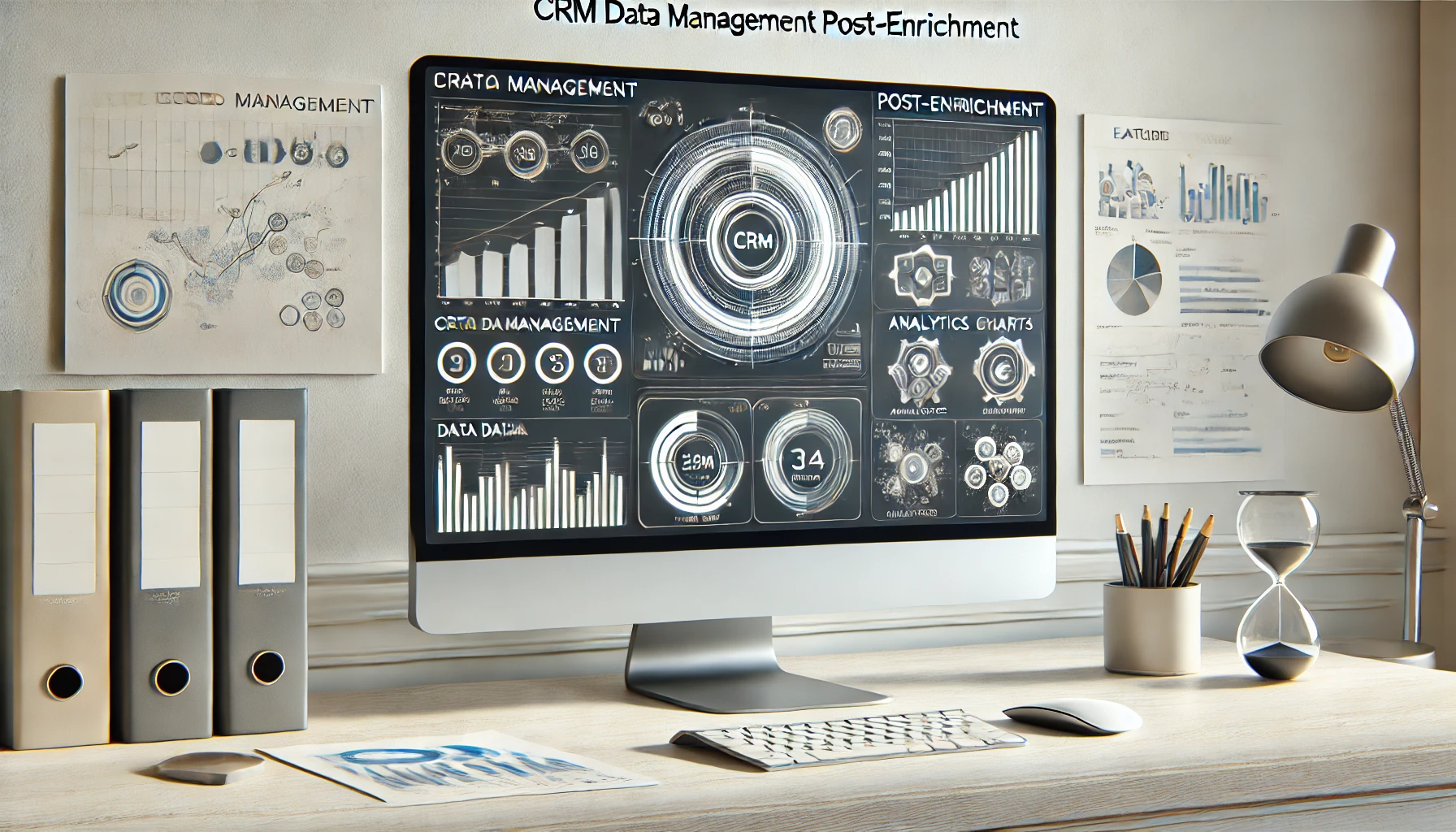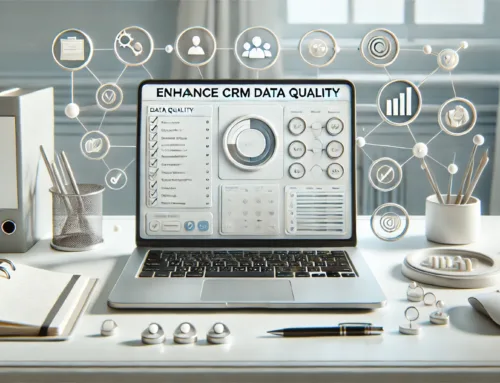Have you ever wondered what happens to CRM data after it’s been enriched? Ensuring data accuracy post-enrichment is a critical task that requires attention to detail and a proactive approach. By following best practices like implementing regular audits, updating outdated records, and detecting duplicates, you can maintain CRM Data Post Enrichment. But there’s more to it than just these steps; keep reading to discover additional strategies for keeping your CRM data accurate and reliable in the long run.
Implement Regular Data Audits
Regular data audits are essential for maintaining the integrity and accuracy of your CRM data. By conducting these audits, you ensure that your data remains reliable and up-to-date. Data integrity is crucial for making informed business decisions and providing personalized customer experiences.
Continuous improvement is another key aspect of implementing regular data audits. Through these audits, you can identify any discrepancies or inconsistencies in your CRM data. By addressing these issues promptly, you can enhance the overall quality of your data and optimize its usefulness for your organization.
Regular data audits also help in identifying areas where data enrichment may be necessary. By continuously monitoring and evaluating your CRM data, you can proactively make improvements and adjustments to ensure that your data remains relevant and valuable for your business operations.
Update Out-of-Date Records
To maintain the accuracy and relevance of your CRM data, it is crucial to regularly update out-of-date records. Ensuring data hygiene and record cleansing is essential for effective CRM management. Here are three key steps to update out-of-date records:
- Review Regularly: Set up a schedule to review and update records systematically. This could be weekly, monthly, or quarterly, depending on the volume of data and the frequency of changes.
- Automate Updates: Utilize CRM tools to automate the process of identifying and flagging out-of-date records. Automation can significantly reduce manual effort and improve efficiency.
- Validate Information: When updating records, make sure to validate the accuracy of the new data. Cross-check information with reliable sources to maintain data integrity and enhance the overall quality of your CRM database.
Detect and Remove Duplicate Entries
To maintain the integrity of your CRM data, it is crucial to identify duplicate records and implement removal procedures. By detecting and removing duplicate entries, you can ensure that your database remains accurate and up-to-date. Implementing efficient removal processes will streamline your data management and improve the overall effectiveness of your CRM system.
Identify Duplicate Records
Identifying duplicate records within your CRM system is crucial for maintaining data accuracy and integrity. To effectively manage duplicate entries, follow these steps:
- Merge Duplicates: Utilize CRM tools or software that offer merge functionality to combine duplicate records into a single, accurate entry. This consolidation helps prevent confusion and ensures that all relevant information is in one place.
- Data Cleansing: Regularly conduct data cleansing procedures to identify and rectify duplicate records. This process involves scrubbing the database for redundant entries and updating or removing them as needed. By keeping your data clean and free of duplicates, you enhance the overall quality and reliability of your CRM system.
- Automate Detection: Implement automated processes or algorithms to detect duplicate records efficiently. Automation can streamline the identification process, saving time and reducing the risk of human error. By setting up automated detection mechanisms, you can proactively manage duplicates and maintain a more accurate CRM database.
Implement Removal Procedures
Duplicate entries in your CRM system can lead to data inconsistencies and hinder your ability to make informed business decisions. To maintain data integrity, implement removal procedures to detect and remove duplicate entries efficiently. Start by conducting regular data cleansing processes to identify duplicate records accurately. Utilize automated tools or software that can scan and compare records based on specific criteria such as email addresses, phone numbers, or names.
Once duplicates are identified, prioritize record purging by consolidating information from duplicate entries into a single, accurate record. Ensure that the merged record contains the most up-to-date and correct information to prevent future duplications. Establish clear guidelines and protocols for handling duplicate entries to streamline the removal process and prevent data redundancy.
Regularly monitor your CRM system for duplicate entries to uphold data quality standards. By implementing effective removal procedures, you can maintain a clean and reliable CRM database, enabling you to make well-informed business decisions based on accurate and consistent data.
Validate Data Accuracy
To ensure the accuracy of your CRM data post-enrichment, implementing data validation techniques and utilizing accuracy monitoring tools is crucial. By validating data accuracy, you can maintain the quality and reliability of your database, ultimately enhancing decision-making processes. These techniques and tools serve as proactive measures to identify and rectify any discrepancies, ensuring that your CRM data remains up-to-date and dependable.
Data Validation Techniques
To ensure the accuracy of your CRM data post-enrichment, implementing effective data validation techniques is crucial. Data cleansing and maintaining data integrity are key aspects of this process. Here are three essential data validation techniques to help you maintain the quality of your CRM data:
- Automated Validation Rules: Create validation rules within your CRM system to automatically check data accuracy upon entry. These rules can help flag inconsistencies or errors in real-time, ensuring that only valid data is being inputted.
- Regular Data Audits: Conduct routine data audits to review the quality and accuracy of your CRM data. By comparing data against reliable sources or industry standards, you can identify and rectify any discrepancies or outdated information.
- Cross-Validation Checks: Implement cross-validation checks by comparing data across different fields or databases within your CRM. This technique helps identify any inconsistencies or duplicates that may have been overlooked during the enrichment process.
Accuracy Monitoring Tools
After implementing effective data validation techniques to maintain the accuracy of your CRM data post-enrichment, the focus shifts to utilizing Accuracy Monitoring Tools to further validate data accuracy. These tools play a crucial role in ensuring ongoing data quality by continuously monitoring and verifying the information stored in your CRM system. By regularly checking for discrepancies or errors, Accuracy Monitoring Tools help uphold the integrity of your data and prevent inaccuracies from affecting your business decisions. Through automated processes and real-time alerts, these tools enable you to swiftly identify and address any issues that may arise, safeguarding the overall reliability of your CRM data. By incorporating Accuracy Monitoring Tools into your data validation strategy, you can proactively uphold data quality standards and maintain a high level of accuracy within your CRM system, ultimately enhancing the effectiveness of your customer relationship management initiatives.
Standardize Data Formats
When it comes to maintaining CRM data post enrichment, one crucial aspect to focus on is standardizing data formats. Ensuring data normalization and cleansing is essential for accurate reporting and decision-making. Here are three key steps to help you standardize data formats effectively:
- Consistent Formatting: Ensure all data fields follow a uniform structure, including date formats, phone numbers, and addresses. Consistency in format simplifies data validation processes and enhances data integrity.
- Validation Protocols: Implement validation rules to check data accuracy and completeness. This step involves verifying that the data entered meets specified criteria, reducing errors and inconsistencies within the CRM system.
- Regular Audits: Conduct routine audits to identify and rectify any deviations from the standardized formats. By regularly monitoring data quality, you can maintain the integrity of your CRM database and improve overall operational efficiency.
Train Staff on Data Maintenance
For effective CRM data maintenance post-enrichment, ensuring that your staff is well-trained on data management practices is paramount. Data hygiene plays a crucial role in the accuracy and reliability of your CRM system. By providing maintenance training to your staff, you equip them with the necessary skills to uphold data integrity. Start by educating your team on the importance of data cleanliness and the impact it has on decision-making processes. Develop clear guidelines for data entry, including standardized formats and protocols. Regularly conduct refresher courses to keep your staff updated on best practices for data maintenance. Encourage a culture of accountability where each team member takes responsibility for the accuracy of the data they handle. By investing in ongoing training and emphasizing the significance of data hygiene, you establish a solid foundation for maintaining high-quality CRM data post-enrichment.
Frequently Asked Questions
How Can We Prevent Data Breaches After CRM Data Enrichment?
To prevent breaches after CRM data enrichment, safeguard your data like a fortress. Implement encryption, access controls, and regular audits. Stay vigilant, for data security is a continuous battle. Remember, the strongest defense starts with proactive protection measures.
What Tools Can Help Automate the Data Validation Process?
To improve data quality, automation tools like validation software can streamline the process. These tools automatically check and verify data, ensuring accuracy and consistency. Implementing such solutions will boost efficiency and reliability in maintaining CRM data post-enrichment.
Is There a Way to Track Changes Made to CRM Records?
You can easily track changes in CRM records by utilizing audit trails, change logs, and data monitoring features. These tools provide a detailed record tracking system, ensuring transparency and accountability in managing your CRM data.
How Do We Ensure Data Consistency Across Different Platforms?
To ensure data consistency across platforms, focus on data synchronization and platform integration. Implement cross-platform validation processes to maintain data accuracy. This approach helps align information seamlessly, reducing discrepancies and enhancing overall data reliability.
What Are the Best Practices for Handling Sensitive Customer Data?
When handling sensitive customer data, exaggerate caution! Implement robust data encryption for utmost security. Enforce strict data access restrictions to safeguard privacy. These practices are critical in protecting valuable information from potential breaches and unauthorized access.




